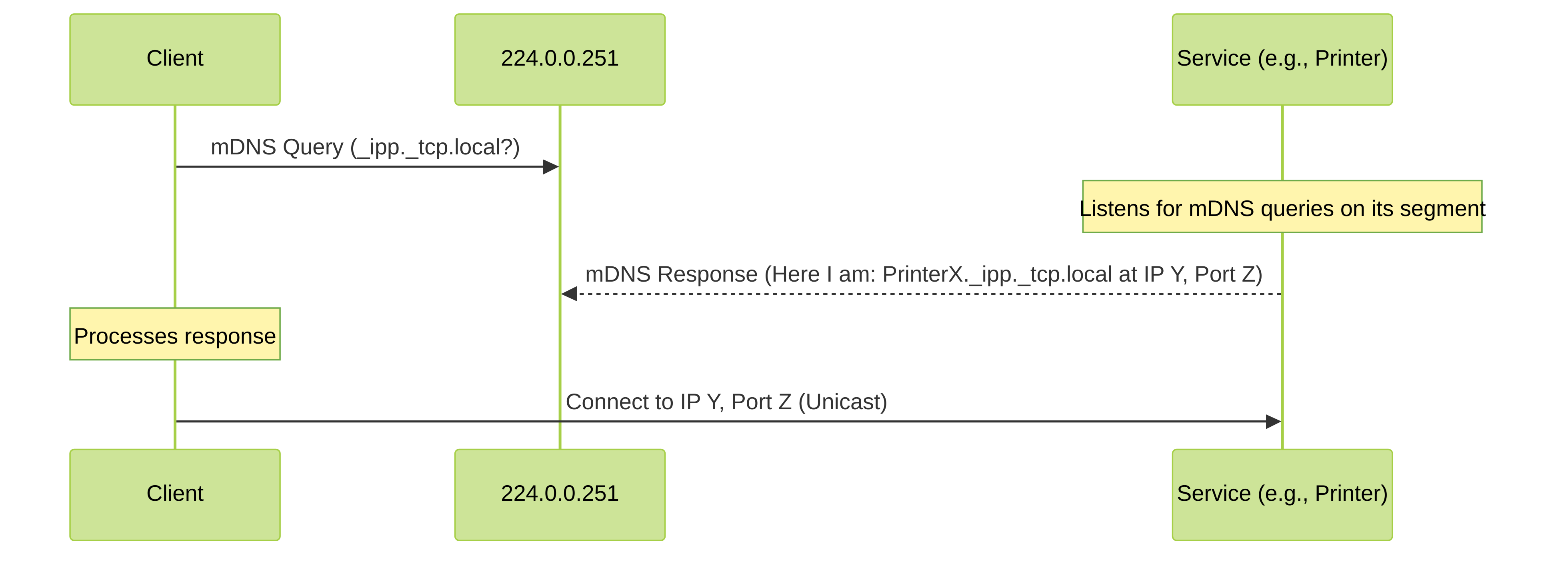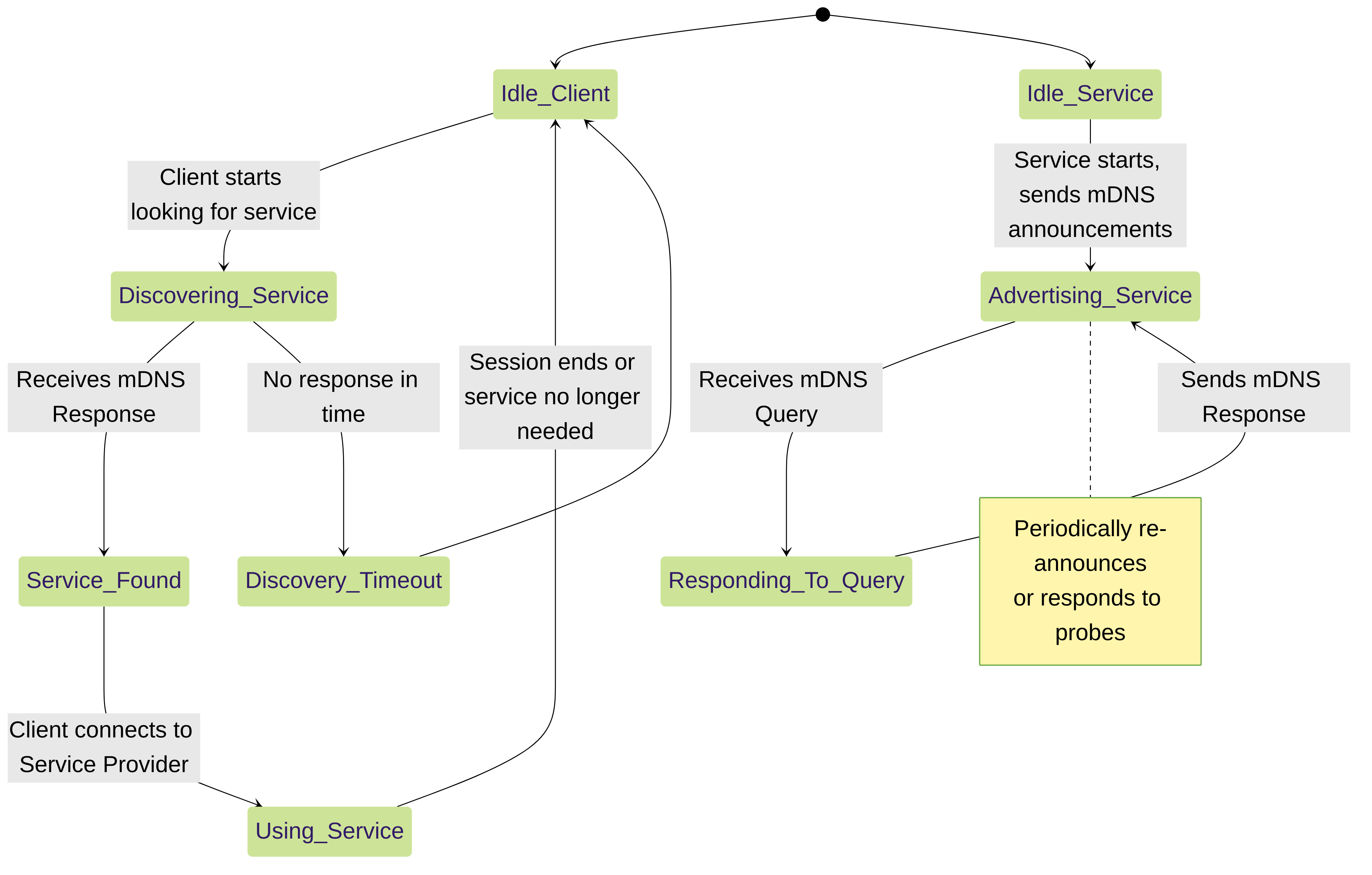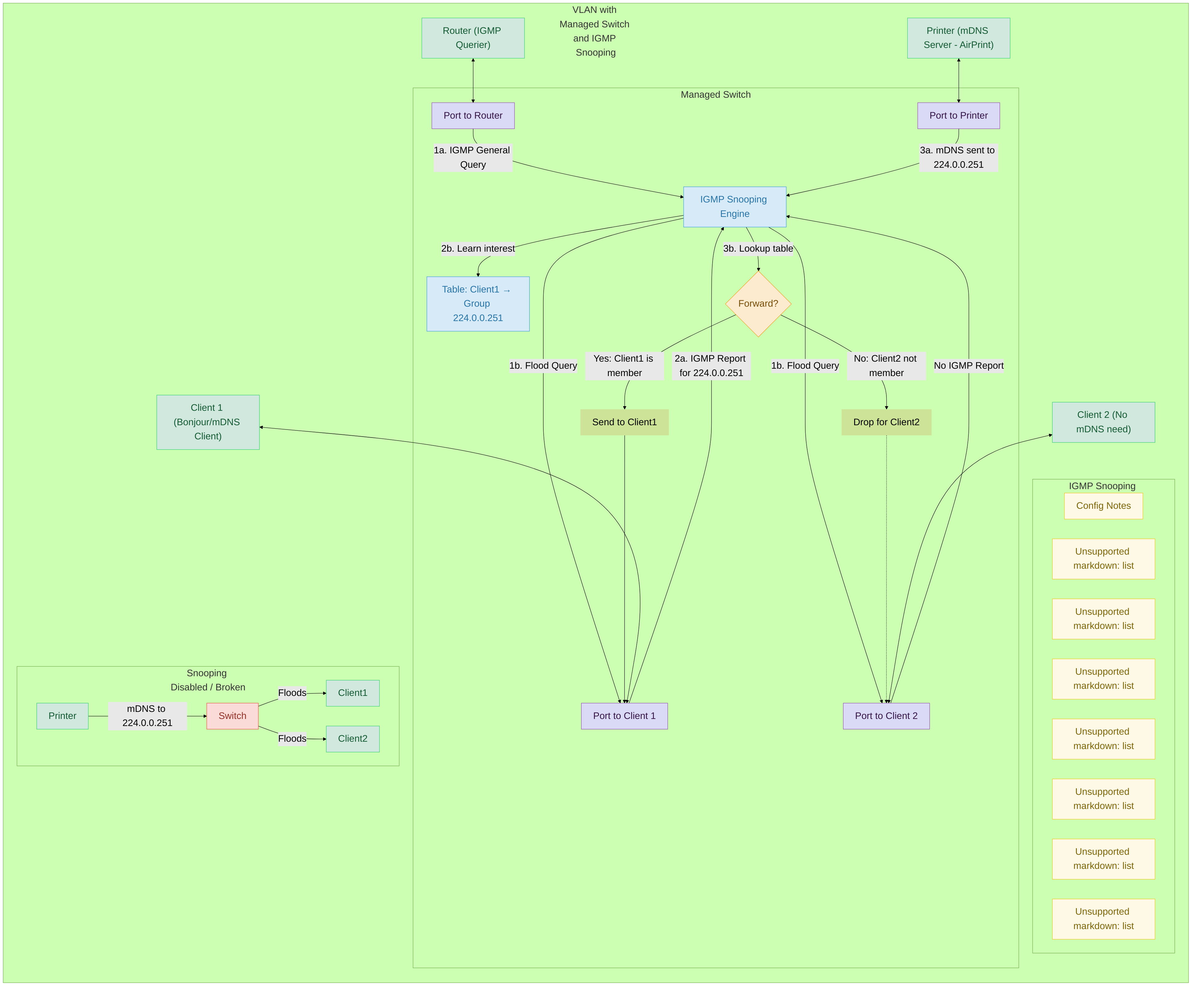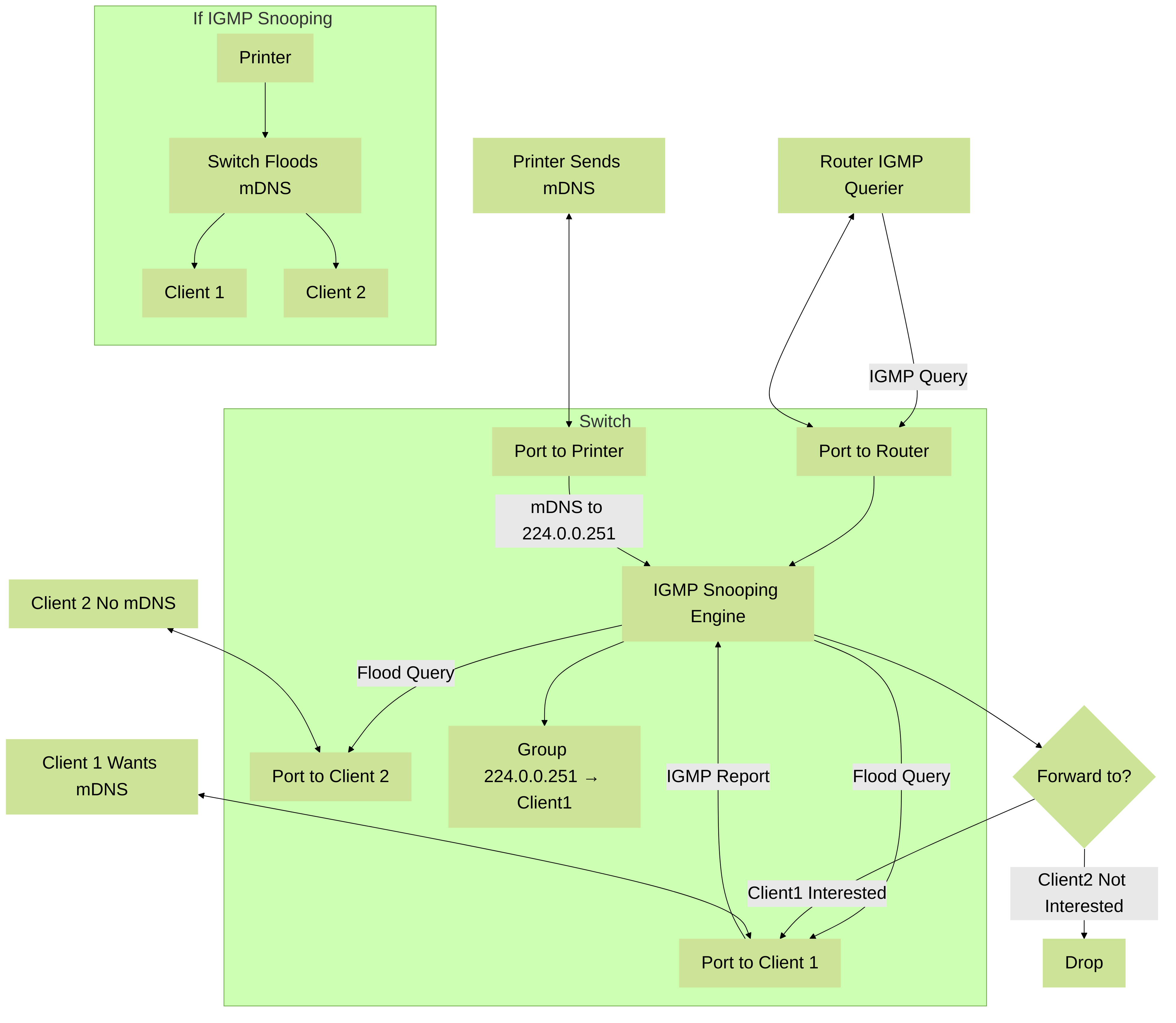Understanding and Configuring Bonjour on Palo Alto Networks Firewalls
The Bonjour protocol, Apple's implementation of zero-configuration networking (Zeroconf), allows devices to automatically discover services on a local network without manual setup. This is incredibly convenient for services like AirPrint, AirPlay, and file sharing. However, its reliance on link-local multicast can create challenges in segmented networks common in enterprise environments. Palo Alto Networks firewalls offer solutions, including the Bonjour Reflector, to address these challenges. This article delves into the Bonjour protocol, its multicast nature, and how to configure Palo Alto Networks firewalls to support it, tailored for PCNSE exam candidates.
What is Bonjour?
Bonjour enables devices to:
- Obtain IP addresses without a DHCP server (using link-local addressing).
- Resolve names to IP addresses without a traditional DNS server (using Multicast DNS - mDNS).
- Discover available services automatically (using DNS-based Service Discovery - DNS-SD).
Essentially, Bonjour simplifies network setup by allowing devices to find each other and the services they offer seamlessly. It is widely used by Apple devices but also found in other products like printers and IoT devices.
How Bonjour Relies on Multicast (mDNS)
The core of Bonjour's discovery mechanism is Multicast DNS (mDNS) . mDNS operates on UDP port 5353 and uses specific link-local multicast addresses:
-
IPv4:
224.0.0.251. -
IPv6:
ff02::fb.
When a device or service wants to announce its presence or discover others, it sends mDNS queries and responses to these multicast addresses. Packets sent to these addresses are typically restricted to the local network segment (broadcast domain or VLAN). This is because the IP Time-To-Live (TTL) for these packets is usually set to 1, preventing routers from forwarding them to other subnets. This link-local scope is by design to prevent flooding larger networks with discovery traffic.

Figure 1: Basic Bonjour mDNS Discovery Flow on a Single Subnet
Service Discovery Process
-
Service Advertisement:
A device offering a service (e.g., an AirPrint printer) sends mDNS multicast announcements, advertising its service type (e.g.,
_ipp._tcp), name, port, and other information. -
Service Discovery (Browsing):
A client device (e.g., an iPhone) looking for a service sends an mDNS multicast query for a specific service type within the
.localdomain (e.g.,_ipp._tcp.local). - Service Resolution: Devices on the local network offering the requested service respond to the query, typically via multicast or sometimes unicast directly to the querier. The response includes the service instance name, hostname, port number, and IP address.

Figure 2: mDNS Query/Response Sequence
The Challenge: Bonjour Across Subnets
The primary challenge with Bonjour in enterprise networks is its link-local multicast nature. When clients and services are on different VLANs or subnets, routers, by default, will not forward these mDNS packets with TTL=1. This means a user on VLAN A cannot discover a printer on VLAN B without a specific solution.
Palo Alto Networks Firewalls to the Rescue: Bonjour Reflector
Palo Alto Networks firewalls can address this challenge using the Bonjour Reflector feature. The Bonjour Reflector (also known as an mDNS gateway or proxy) listens for Bonjour traffic on specified Layer 3 interfaces and then forwards (reflects) this traffic to other specified Layer 3 interfaces. This effectively allows Bonjour discovery to span across different subnets connected to the firewall, overcoming the TTL=1 limitation. The firewall modifies the source MAC address of the reflected packets to its own egress interface MAC address to prevent loops.
How the Bonjour Reflector Works
The firewall listens for mDNS traffic (UDP port 5353, destination IP address 224.0.0.251) on Layer 3 interfaces that have Bonjour Reflector enabled. It then rebroadcasts the mDNS traffic to all other Layer 3 interfaces that also have Bonjour Reflector enabled. This allows service announcements and queries to reach devices across different subnets managed by the firewall.

Figure 3: Palo Alto Networks Bonjour Reflector Operation
Configuring Bonjour Reflector on PAN-OS
To configure the Bonjour Reflector on a Palo Alto Networks firewall:
-
Enable Bonjour Reflector on Interfaces:
-
Navigate to
Network > Interfaces. - Select the Layer 3 Ethernet interface or subinterface (or AE interface/subinterface) that is connected to a subnet requiring Bonjour services (either providing or consuming).
- Under the IPv4 tab (Bonjour Reflector primarily supports IPv4 traffic forwarding), check the Enable Bonjour Reflector option.
- Click OK.
- Repeat this for all L3 interfaces/subinterfaces between which you want to forward Bonjour traffic. You must enable this option on all supported interfaces that you want to manage Bonjour traffic. Up to 16 interfaces can typically have this enabled.
-
Navigate to
- Commit Changes: Commit the configuration changes to the firewall.
The Bonjour Reflector feature is configured on a per-interface basis for Layer 3 interfaces (Ethernet, AE, and subinterfaces). This is a key point for the PCNSE exam.
The documentation indicates that to forward Bonjour traffic between L3 interfaces, the "Enable Bonjour Reflector" option must be selected on those specific interfaces. This allows the firewall to listen for mDNS traffic (UDP 5353, destination 224.0.0.251) on these interfaces and then re-broadcast it to the other interfaces where the option is also enabled.
Security Policies for Bonjour
In addition to enabling the Bonjour Reflector, you must have appropriate Security Policies in place to allow the Bonjour traffic (UDP port 5353) between the zones associated with the interfaces where the reflector is enabled. A security policy rule determines whether to block or allow a session based on traffic attributes.
A sample policy rule might look like this:
- Source Zone: Zone_A (e.g., User_VLAN_Zone)
- Source Address: Any (or specific subnets)
- Destination Zone: Zone_B (e.g., Printer_VLAN_Zone)
-
Destination Address:
224.0.0.251(the mDNS multicast address) -
Application:
Create a custom application for
mDNS(UDP/5353) or usebonjour. Palo Alto Networks might have a pre-defined App-ID such asapple-airplaywhich could be used if appropriate for the services being discovered, though mDNS is the core discovery protocol. It's best practice to use the most specific App-ID. - Service: UDP/5353 (or a custom service object)
- Action: Allow
Remember to have reciprocal rules if services are also initiated from Zone_B to Zone_A, or if responses need explicit allowance depending on statefulness and reflector behavior.

Figure 4: Simplified State Diagram for Bonjour Client and Service
Configuring Network Infrastructure for Bonjour
For Bonjour to work correctly, especially in larger or more complex networks, other network components also need proper configuration.
Switches
-
IGMP Snooping:
This is crucial on managed switches. IGMP snooping allows switches to listen to IGMP (Internet Group Management Protocol) messages between hosts and routers. It helps the switch learn which ports need to receive specific multicast traffic, rather than flooding it to all ports in a VLAN.
- If IGMP snooping is too aggressive or misconfigured, it might block mDNS traffic. Some Dell Networking switches recommend disabling IGMP snooping for Bonjour or ensuring unregistered multicast traffic is flooded. NETGEAR switches might require specific IGMP snooping configurations and enabling Bonjour services.
-
Ensure mDNS multicast address
224.0.0.251is correctly handled. Some switches might require configuring them as "known" multicast addresses or adjusting "Block Unknown Multicast Address" settings. - On some switches, enabling flooding of unregistered multicast traffic within the VLAN might be necessary if IGMP snooping prunes mDNS.
- IGMP Querier: In each VLAN that carries multicast traffic, there should be an IGMP querier. The querier periodically asks hosts to report their multicast group memberships. A Layer 3 switch or router usually performs this role.
 Zoom In
This is a less clutered diagram
Zoom In
This is a less clutered diagram

Routers (Beyond Firewall as Reflector)
- If not using a Bonjour Reflector and attempting standard multicast routing (which is generally not suitable for Bonjour's link-local multicast), you would need PIM (Protocol Independent Multicast). However, PIM will not forward link-local multicast (like 224.0.0.251) by default because of the TTL=1 and the address scope. This is why Bonjour Reflectors or Gateways are the preferred solution.
- Some routers or L3 switches offer their own mDNS gateway/reflector functionality (e.g., Cisco, Avahi on Linux).
Wireless Infrastructure (APs and WLCs)
- Multicast Handling: Wireless LAN Controllers (WLCs) and Access Points (APs) must efficiently handle multicast traffic. If not, mDNS packets might be dropped or poorly delivered over Wi-Fi.
- Multicast to Unicast Conversion: Many WLCs can convert multicast packets to unicast packets for wireless clients. This can improve reliability for multicast delivery over Wi-Fi, which is inherently less reliable than wired.
- Broadcast/Multicast Filtering: Ensure that APs or WLCs are not filtering out mDNS/Bonjour traffic. Mist APs, for instance, automatically enable broadcast/multicast filters if Bonjour Gateway is enabled and drop unsolicited mDNS.
- Client Isolation: If AP client isolation is enabled (preventing wireless clients on the same AP from communicating directly), this can break Bonjour unless the WLC/AP specifically proxies mDNS.
- DTIM Interval: The Delivery Traffic Indication Message (DTIM) interval on APs can affect how often sleeping wireless clients wake up to receive multicast (and broadcast) traffic. A misconfigured DTIM can delay or prevent Bonjour discovery for battery-powered devices.
- Bonjour Gateway on WLC/AP: Many enterprise wireless systems (Cisco, Aruba, Ruckus, Mist, Huawei) have built-in Bonjour Gateway functionality. If this is used, ensure it's coordinated with the firewall's role to avoid conflicts.
PCNSE Exam Focus: Key Concepts and Typical Questions
For the PCNSE exam, expect questions related to:
- The purpose of Bonjour and mDNS (automatic discovery of devices and services).
-
The multicast address and port used by mDNS (
224.0.0.251, UDP5353). - Why Bonjour doesn't work across subnets by default (TTL=1, link-local scope).
- The function of the Palo Alto Networks Bonjour Reflector (to forward Bonjour/mDNS traffic between L3 interfaces on different subnets).
- The type of interface on which Bonjour Reflector is configured (Layer 3 interfaces, including Ethernet, AE, and subinterfaces).
- The requirement to enable the reflector on all participating L3 interfaces .
- The need for Security policies to allow mDNS traffic (UDP/5353) between relevant zones.
- Supported platforms for Bonjour Reflector (e.g., PA-220, PA-400, PA-800, PA-3200 series, etc., always check current documentation).
- Basic troubleshooting: checking reflector enabled on interfaces, security policies, and switch IGMP snooping.
Typical PCNSE Exam Questions (Conceptual):
-
A customer reports that users in VLAN A cannot discover AirPrint printers located in VLAN B. A Palo Alto Networks firewall segments these VLANs. Which feature should be configured on the firewall to enable this discovery?
(Answer Hint: Bonjour Reflector) -
On which type of interface is the Palo Alto Networks Bonjour Reflector enabled?
(Answer Hint: Layer 3 interface) -
An administrator has enabled Bonjour Reflector on the L3 interface for VLAN_USER and the L3 interface for VLAN_SERVICE. Users still cannot discover services. What is a likely missing configuration on the firewall?
(Answer Hint: Security policy allowing UDP 5353 between the respective zones) -
What is the primary multicast IP address used by Bonjour for service discovery in IPv4?
(Answer Hint: 224.0.0.251) -
Why do mDNS packets typically not traverse routers by default?
(Answer Hint: TTL is set to 1 and they are link-local scope multicasts)
Important Note for PCNSE Candidates: While this article provides a comprehensive overview, always refer to the latest official Palo Alto Networks documentation and release notes for the most current and specific information regarding Bonjour Reflector configuration, supported platforms, and best practices.